PRODUCTS
Technology / Product Information
Technology / product information
20hits
Narrow by Industry Category
Narrow by material Category
Narrow by accuracy
Narrow by lot number
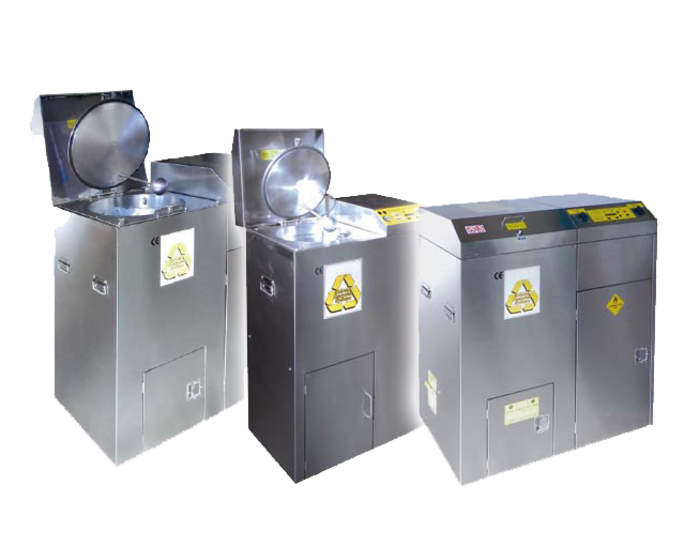
Automatic Solvent Recycler | How to Reuse Solvents Effectively and Reduce Costs
An automatic solvent recycler helps factories cut costs and reduce waste by regenerating used solvents. Ideal for Thai industries aiming for sustainability and compliance. ■ What is an Automatic Solvent Recycler? An automatic solvent recycler is a device designed to regenerate used solvents, restoring them for reuse in production processes. This supports environmental goals and significantly reduces operational solvent costs. It is widely adopted across industries including electronics, automotive, chemicals, and printing. ■ Solvents That Can Be Regenerated Morikawa’s system supports a wide variety of solvents such as: - Hydrocarbon Solvents: Toluene, Xylene, Solvent naphtha, Normal hexane, Isohexane - Alcohol-Based Solvents: Methanol, Ethanol, Butanol, Isopropyl alcohol (IPA) - Ketone-Based Solvents: Acetone, Methyl ethyl ketone (MEK), Methyl isobutyl ketone (MIBK) - Ester-Based Solvents: Ethyl acetate, Butyl acetate, Methoxybutyl acetate, Normal propyl acetate - Halogenated, Fluorinated, Chlorinated Solvents This broad compatibility makes the system ideal for Thailand's diverse industrial needs. ■ How It Works - The process combines distillation and purification: - Heating & Vaporization: Contaminated solvent is heated to vaporize. - Condensation & Liquefaction: The vapor is cooled and converted back to liquid. - Impurity Separation: Impurities are filtered out, yielding clean, high-purity solvents. - This closed-loop method boosts efficiency and sustainability. ■ Key Benefits for Thai Factories - Lower Solvent Costs: Reduces need to repurchase expensive solvents. - Waste Reduction: Less hazardous waste disposal. - Efficient Resource Reuse: Maximizes input utilization. - Regulatory Compliance: Supports proper industrial waste management. ■ Why Choose Morikawa? Morikawa’s automatic solvent recycler integrates advanced Japanese technology for superior regeneration rates. Compatible with multiple solvent types, it suits many production environments. T.I.T. ELECTRONICS CO., LTD., based in Bangkok, provides nationwide service and support in Thailand. For further details, please download the PDF or contact us directly. #solventrecycler #industrialcleaning #factorycostsaving #Thailandindustry #environmentalcompliance #wastereduction #chemicalrecycling #solventreuse #Morikawa #OEM
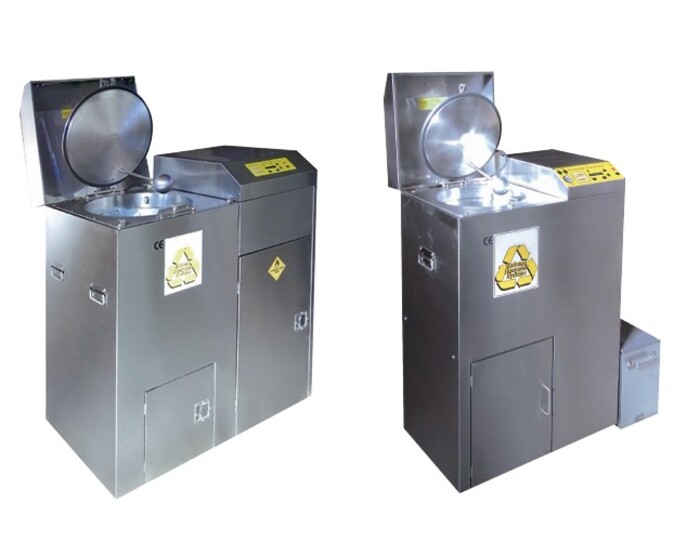
Automatic Solvent Regeneration Equipment | Applications in Chemical, Manufacturing, and Printing Industries
■ What is Automatic Solvent Regeneration Equipment? Automatic solvent regeneration equipment is a system that reclaims used solvents through advanced purification processes. This helps factories avoid continuous solvent purchases and reduces hazardous waste, aligning with both economic and environmental goals. ■ Applications in the Chemical Industry In chemical plants, solvent reuse is essential due to their widespread use in: - Reaction Processes: Solvents from chemical reactions can be regenerated for reuse, cutting material costs. - Cleaning Operations: Solvents used for cleaning reactors, tanks, and pipelines can be restored. - Extraction Processes: Solvents used in material extraction can be efficiently recovered and reused. ■ Applications in the Manufacturing Industry Automatic regeneration equipment is widely used in industrial production lines: - Metal Component Cleaning: Solvents used for cleaning can be reused multiple times. - Painting Lines: Reclaiming solvents from spray booths and paint systems reduces solvent consumption. - Plastic Fabrication: Solvents used in molding and finishing can be recycled effectively. ■ Applications in the Printing Industry For printing operations, solvent recycling significantly lowers operational costs: - Machine Cleaning: Solvents for cleaning rollers and presses can be reused. - Ink Solvent Reuse: Leftover ink solvents are regenerated for continuous use. - Plate Cleaning: Used solvents for plate washing can be efficiently restored. ■ Why Choose Morikawa Sangyo? Morikawa Sangyo’s solvent regeneration equipment is built for performance and simplicity: - High Regeneration Efficiency: Uses proprietary distillation and purification technologies. - Easy-to-Use: Automated systems with minimal operator input. - Eco-Friendly: Reduces solvent waste and lowers environmental risks. - Trusted Brand: Proven success with customers across sectors. Sales & Support in Thailand T.I.T. ELECTRONICS CO., LTD., based in Bangkok, is the official distributor for Thailand, offering nationwide service and technical support. For more details, please download the PDF or contact us directly. #solventrecovery #chemicalindustry #manufacturingthailand #printingindustry #wastereduction #environmentalsolutions #industrialcleaning #solventreuse #Morikawa #OEM
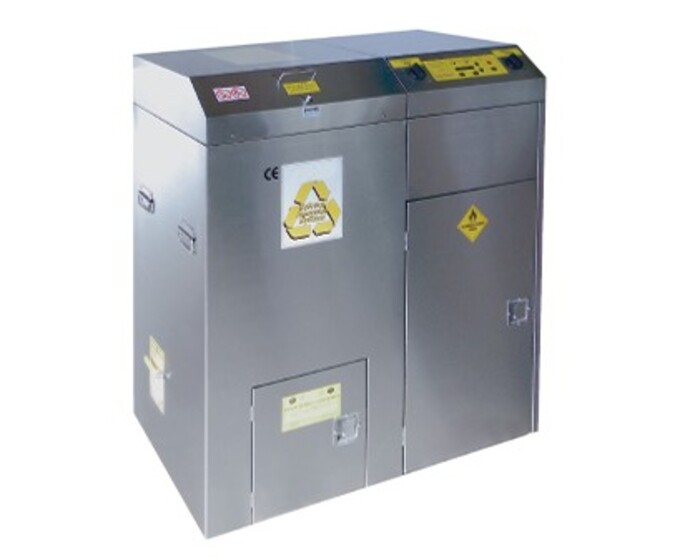
Automatic Solvent Recycling Equipment | Save Up to 50% on Solvent and Waste Management Costs
Morikawa’s automatic solvent recycling equipment reduces solvent costs and waste disposal expenses by up to 50%, helping factories in Thailand achieve sustainability and profitability. ■ What is Automatic Solvent Recycling Equipment? Automatic solvent recycling equipment regenerates used solvents such as IPA, acetone, and toluene for reuse. Common in the chemical, printing, and manufacturing sectors, it reduces the need to purchase new solvents and minimizes industrial waste—offering a powerful cost-saving solution. ■ How It Reduces Costs Introducing this system reduces both material and disposal costs through three key mechanisms: - Solvent Reuse: Regenerated solvents reduce raw material purchases - Lower Disposal Costs: Decreases the volume of hazardous waste - Reduced Transport Costs: Less waste means fewer transport cycles - Improved Green Branding: Supports CSR and improves the company’s eco-profile ■ Actual Cost Reduction Outcomes - Annual Savings: Users report savings of several million yen (equivalent to hundreds of thousands of baht) per year - Payback Period: Initial investment recovered within 1–2 years - Low Operating Cost: Equipment is energy-efficient and requires minimal maintenance ■ Case Studies from Japan - Chemical Factory: Reduced new solvent costs by 30% annually - Printing Facility: Cut waste disposal costs in half - Manufacturing Plant: Saved 20% on transportation costs of waste solvents ■ Why Choose Morikawa Industries? - High Efficiency: Regeneration rate up to 90%, depending on solvent type - Easy to Operate: Fully automated, touch-panel control - Eco-Friendly: Reduces environmental impact, aligns with ESG goals - Trusted in Japan and Asia: Proven installations across various industries Local Support in Thailand Morikawa’s official distributor in Thailand, T.I.T. ELECTRONICS CO., LTD., provides nationwide technical service and maintenance from its Bangkok base. For more details, please download the PDF or feel free to contact us. #solventcostreduction #industrialsustainability #wastereduction #chemicalrecycling #factorycostsavings #Thailandindustry #IPArecycling #Morikawa #solventreuse #OEM
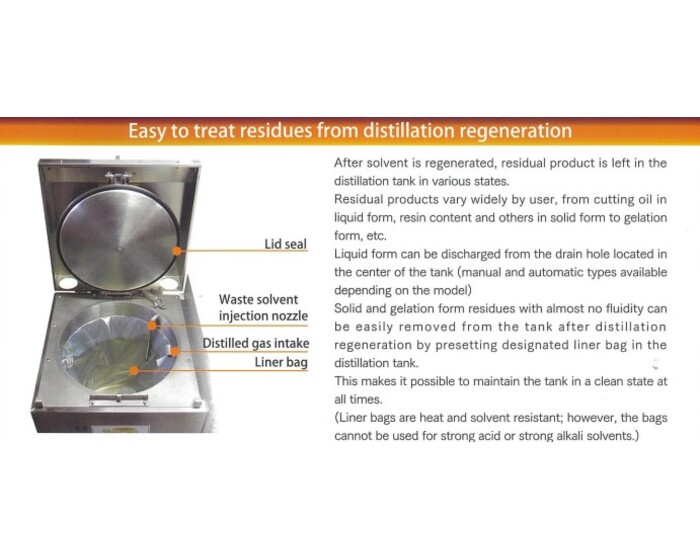
Morikawa Automatic Solvent Recycling System | Cut Waste and Save Costs with High-Efficiency Solvent Reuse
The Morikawa Automatic Solvent Recycling System helps factories recycle solvents like IPA and acetone with up to 90% efficiency—cutting costs, reducing waste, and supporting sustainability goals. ■ Problem: Solvent Waste and High Purchasing Costs Thai factories across manufacturing, R&D, and cleaning sectors use large amounts of solvents such as isopropyl alcohol, toluene, and acetone. The challenge: - High replacement cost due to frequent solvent purchases - Environmental burden from waste solvent disposal - Operational inefficiency caused by manual handling and storage ■ Solution: Morikawa Automatic Solvent Recycling System Morikawa's system reclaims used solvents through automated distillation, delivering reusable, high-purity solvents safely and efficiently. ■ Key Features - Automatic Operation: Full-cycle automation from heating to condensation - Eco-Friendly: Reduces waste discharge and supports green operations - Cost-Efficient: Reduces solvent purchase needs by up to 70% - High Efficiency: Up to 90% recovery rate depending on solvent condition - Safe Design: Overheat protection, leak detection, auto shutoff - User-Friendly Interface: Intuitive touch panel operation ■ Supported Solvents - Alcohols: IPA, ethanol, methanol - Aromatics: Toluene, xylene - Ketones: Acetone, MEK - And other industrial solvents ■ Common Applications - Manufacturing: Solvent reuse for component cleaning and painting lines - Cleaning Industry: Solvent recovery from precision cleaning processes - Laboratory & R&D: Small-batch solvent recovery in research settings ■ Local Sales & Service in Thailand T.I.T. ELECTRONICS CO., LTD., based in Bangkok, is Morikawa’s official distributor in Thailand. They provide full technical support, maintenance, and fast service nationwide. For more details, download the PDF or feel free to contact us. #solventrecycling #chemicalreuse #industrialsolvents #wastereduction #Thailandmanufacturing #IPAreuse #Morikawa #distillationsystem #OEM #costsavingfactory
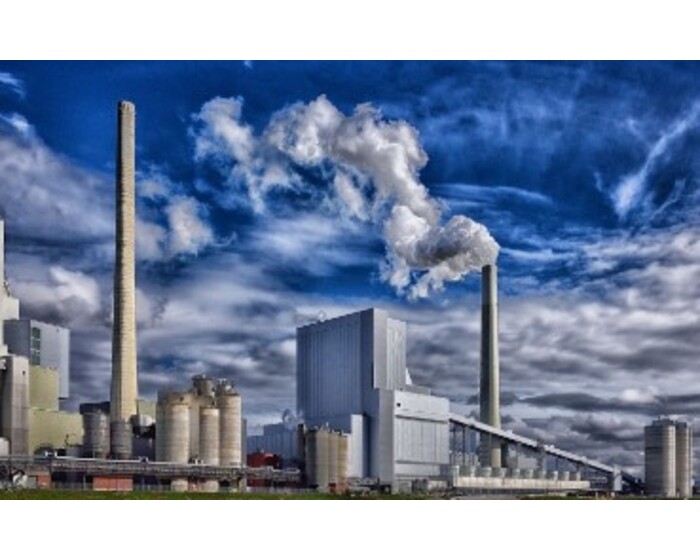
Automatic Solvent Recycling System | Morikawa’s Unique Strengths for Cost-Efficient, Sustainable Operations
Morikawa’s automatic solvent recycling system combines high-efficiency technology with local Thai service support, helping factories reduce solvent costs and achieve environmental goals. ■ What is Morikawa’s Automatic Solvent Recycling System? This system reprocesses used solvents such as IPA, acetone, and toluene into reusable form. Designed for industries with high solvent consumption, it helps reduce procurement costs and minimize environmental impact. Available in Thailand through local distributor T.I.T. ELECTRONICS CO., LTD. ■ Morikawa’s Key Strengths - High-Efficiency Technology: Regenerates solvents with up to 90% efficiency - Eco-Friendly Design: Reduces waste and carbon footprint - User-Friendly Interface: Touch-panel controls and minimal training required - Durable Materials: Long-lasting design suited for factory environments - Customizable Systems: Configurable for different solvents and processes - Fast Thai Support: Service backed by T.I.T. ELECTRONICS CO., LTD. with coverage nationwide from Bangkok ■ Applications in Industry - Chemical Plants: Solvent recovery from reaction and cleaning processes - Manufacturing Lines: Reuse of solvents from parts cleaning and painting booths - R\&D Labs: Regeneration of expensive solvents for repeated lab use ■ Why Choose Morikawa? More than just equipment, Morikawa delivers: - Cost Savings: Reduced new solvent purchases and waste management expenses - Sustainability: Helps meet ESG and CSR goals - Localized Support: Prompt and professional service in Thailand For more details, download the PDF or contact us directly. #solventrecycling #greenmanufacturing #costreduction #Thailandindustry #solventreuse #chemicalefficiency #IPArecycling #Morikawa #OEM #factorysustainability

Automatic Solvent Recycling Machine | High-Efficiency Regeneration with 95% Recovery Rate
Morikawa’s automatic solvent recycling machine regenerates up to 100 liters of used solvent per day with 95% efficiency—cutting costs and reducing environmental waste across multiple industries. ■ What is the Automatic Solvent Recycling Machine? This system is designed to recycle used solvents such as IPA, acetone, and toluene, converting them into reusable form. It is ideal for operations with high solvent usage in sectors like chemicals, pharma, automotive, and printing. ■ Specifications - Processing Capacity: Up to 100 liters/day - Recycling Efficiency: Over 95% solvent recovery - Operating Temperature: Adjustable up to 200°C - Power Usage: Approx. 1.5 kWh ■ Application Areas - Chemical Plants: Recover solvents from cleaning or synthesis processes - Pharmaceutical Factories: Efficient recovery during drug formulation - Automotive Manufacturing: Regenerate solvents from paint lines - Printing Industry: Recycle ink solvents and cleaning agents ■ Why Choose Morikawa? With high recycling performance, durable design, and easy operation, Morikawa systems are trusted in demanding industrial settings. The system significantly reduces the need for new solvent procurement while supporting sustainable operations. 📎 Download detailed product PDF 📞 Contact T.I.T. ELECTRONICS CO., LTD. anytime for support across Thailand #solventregenerator #factorysolventrecycling #Thailandindustry #solventreuse #chemicalprocessing #industrialcleaning #printingfactory #automotivepaint #Morikawa #OEM
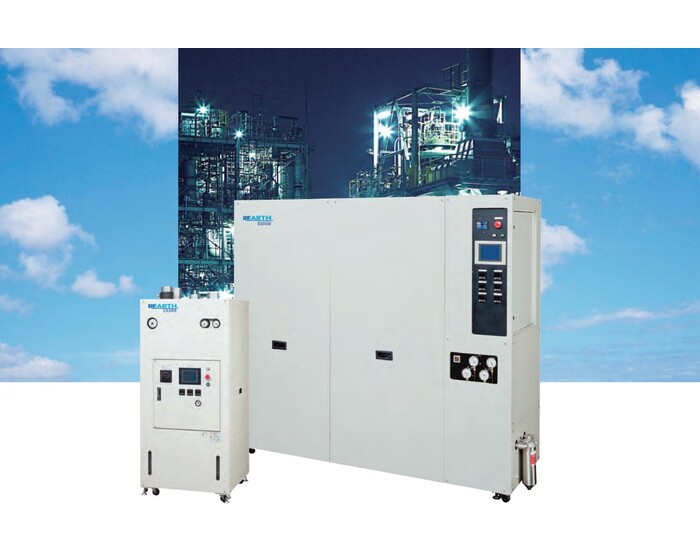
REARTH® Series Solvent Gas Recovery System | Cut Solvent Loss by 66% While Meeting Emission Regulations
The REARTH® Series solvent gas recovery system helps factories reduce solvent costs and meet exhaust regulations by efficiently recovering and reusing vaporized solvents from parts cleaning and coating processes. ■ What is the REARTH® Series? Morikawa’s REARTH® Series is designed to recover organic solvent vapors during cleaning and coating of precision components. Through advanced compression cooling, it condenses solvent gas for reuse—cutting costs, emissions, and environmental risks. ■ Key Features - Cost Reduction: Recovered solvents are reused, reducing purchase volumes - Emission Control: Exhaust concentration drops from 725 ppm to 15 ppm - High-Efficiency Recovery: Compression cooling maximizes solvent gas recovery - Eco-Economic Benefit: Supports both compliance and operational savings ■ Specifications - Application: Precision parts cleaning and coating lines - Cooling System: Advanced compression cooling - Recovery Efficiency: Cuts solvent gas loss by approx. 66% - Environmental Compliance: Meets strict atmospheric emission standards ■ Why Choose Morikawa? The REARTH® Series delivers strong ROI by recovering solvent vapor that would otherwise be lost. It also protects the environment and supports factory compliance with tightening emissions regulations. 📎 Download detailed product PDF 📞 Contact T.I.T. ELECTRONICS CO., LTD. anytime for support across Thailand 🔗 Cluster Internal Link • Basic Knowledge: https://prime.nc-net.com/104303/en/product_others/detail_goods/27704 • Advance Knowledge: https://prime.nc-net.com/104303/en/product_others/detail_goods/27705 #REARTH #solventgasrecovery #VOCreduction #environmentalcompliance #Thailandfactory #coatingprocess #solventreuse #Morikawa #OEM #industrialemissions
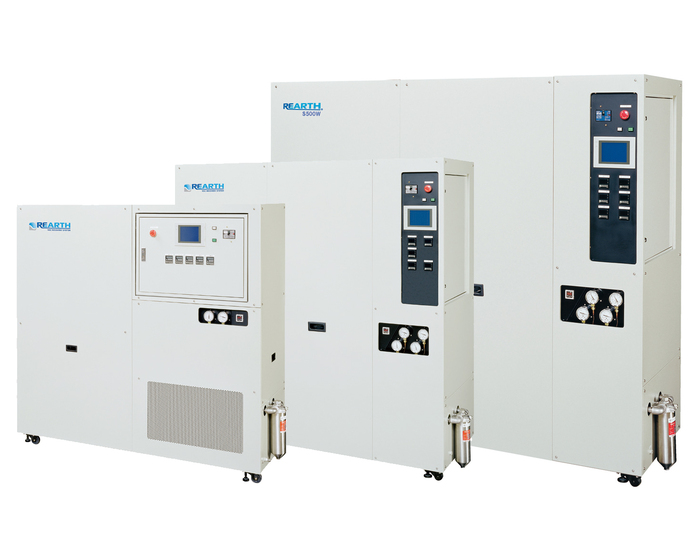
REARTH® S Series Gas Recovery System | Reduce Emissions by 99% and Reclaim Costly Solvents
Morikawa’s REARTH® S Series captures and reuses organic solvent gas from coating and cleaning processes, helping factories reduce emissions by over 99% while cutting solvent procurement costs. ■ What is the REARTH® S Series? The REARTH® S Series is designed to recover vaporized organic solvents—common in precision part cleaning and coating—using deep freeze condensation technology. This process liquefies and returns costly solvents back into production, while drastically reducing atmospheric emissions. ■ Key Features - 99% Removal Rate: Ultra-efficient deep freeze condensation method - Versatile: Supports various solvent types and exhaust system setups - Compact Design: Requires no drainage and saves factory space - High-Quality Solvent Recovery: Outputs reusable-grade liquid solvent - Proven Installations: Trusted in factories across Japan and Asia - Eco-Economic Solution: Reduces raw material costs and environmental burden ■ Specifications - System Name: REARTH® S Series Organic Solvent Gas Recovery System - Technology: Deep Freeze Condensation - Applicable Solvents: Wide range of industrial organic solvents - Installation: Compact, no drainage required ■ Why Morikawa? With leading-edge solvent recovery efficiency and Thailand-based support from T.I.T. ELECTRONICS CO., LTD., Morikawa provides both environmental compliance and cost savings in one system. 📎 Download detailed product PDF 📞 Contact T.I.T. ELECTRONICS CO., LTD. anytime for support across Thailand #REARTHSseries #solventgasrecovery #deepfreezecondensation #VOCremoval #solventreuse #Thailandindustry #precisioncleaning #coatingprocess #Morikawa #OEM
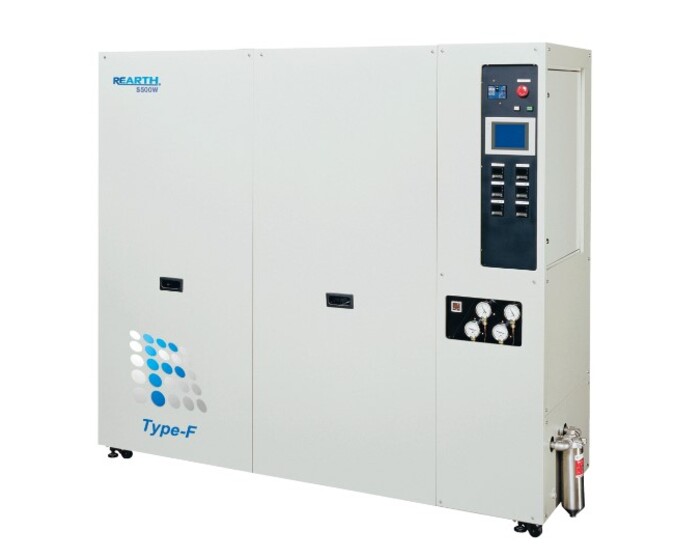
REARTH® S Series F Type | Enhanced Solvent Recovery with Adsorbents for HFO Compliance
The REARTH® S Series F Type boosts solvent recovery performance using special adsorbents, delivering cleaner recycled liquids and full compatibility with next-generation fluorinated solvents (HFOs) under strict emission regulations. ■ What is the REARTH® S Series F Type? Building on the trusted S Series, the F Type introduces Morikawa’s proprietary adsorbent module, improving the quality of recovered solvents while maintaining over 99% removal efficiency via compression cryogenic condensation. It also supports HFO-based fluorinated solvents, making it ideal for future-focused factories under tightening regulations. ■ Key Features - Higher Purity Recovery: Proprietary adsorbent captures finer impurities for better solvent quality - Easy Upgrade for S Series Users: Replaceable adsorption unit adds value without replacing the system - HFO Compatibility: Ready for next-gen fluorinated solvents - 99%+ Removal Rate: Maintains strong performance through cryogenic condensation - Compact and Drain-Free: Flexible placement in any facility - Cost-Efficient: Reduces solvent procurement and environmental risk - Proven Installations: Trusted in emission-sensitive sectors ■ Specifications - Name: REARTH® S Series F Type - Recovery Technology: Cryogenic condensation + special adsorbent - Compatible Solvents: Organic + HFO-type fluorinated solvents - Installation: Compact, no drainage required ■ Why Choose the F Type? Morikawa’s F Type leads the market in solvent recovery quality, helping Thai factories align with evolving global environmental standards—while delivering strong cost and compliance returns. 📎 Download detailed product PDF 📞 Contact T.I.T. ELECTRONICS CO., LTD. anytime for support across Thailand #REARTHFtype #solventrecovery #HFOcompatible #fluorinatedsolvents #VOCreduction #Thailandindustry #solventreuse #Morikawa #environmentalcompliance #OEM
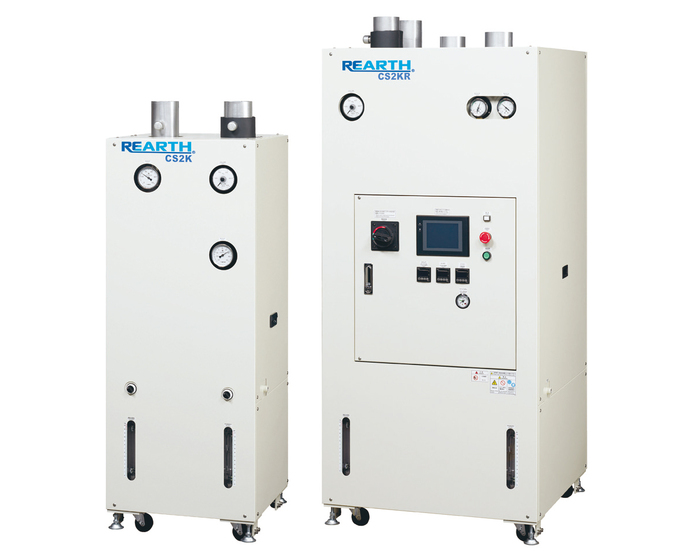
REARTH® CS Series | Safe Recovery of Flammable Solvent Gases with Low-Temperature Condensation
The REARTH® CS Series is designed to safely recover flammable organic solvent gases using atmospheric low-temperature condensation. It improves solvent reuse while minimizing operational risk and installation footprint. ■ What is the REARTH® CS Series? Morikawa’s REARTH® CS Series builds on the trusted S Series, tailored specifically for flammable solvent gas recovery. It uses a low-temperature condensation system at atmospheric pressure to condense and liquefy flammable vapors efficiently—making it ideal for industries where fire risk is a concern. ■ Key Features - Designed for Flammable Solvents: Targeted recovery of volatile and hazardous gases - Upgrade Ready: Easy transition from REARTH® S Series for existing users - Efficient Condensation: Combines cooling water and refrigeration to liquefy gas - Compact Equipment: Saves space in factory layouts - Reduced Operating Cost: Reuses refrigerant exhaust for improved efficiency - Improved Safety and Compliance: Enables better VOC handling under safety standards ■ Specifications - Name: REARTH® CS Series - Technology: Atmospheric Low-Temperature Condensation - Target Gases: Flammable organic solvent gases (e.g., toluene, xylene) - Structure: Compact, integrated with low-temperature cooling ■ Why Choose the CS Series? The REARTH® CS Series offers enhanced safety, lower operating cost, and flexible installation—ideal for solvent-heavy operations in automotive, coatings, and chemical processing industries. 📎 Download detailed product PDF 📞 Contact T.I.T. ELECTRONICS CO., LTD. anytime for support across Thailand #REARTHCSseries #flammablesolventrecovery #VOCsafety #lowtemperaturecondensation #solventgasrecovery #Thailandindustry #industrialsolvents #Morikawa #OEM #hazardousgascontrol
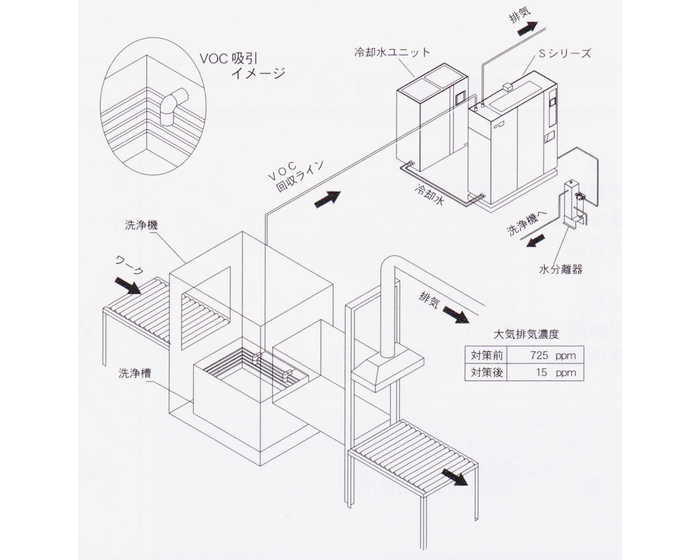
Case Study: REARTH® S Series Cuts VOC Emissions by 66% in Transport Machinery Manufacturing
Company A, a transport machinery manufacturer, reduced VOC emissions from 725 ppm to 15 ppm using Morikawa’s REARTH® S Series—achieving regulatory compliance and sustainable operations. ■ Background - Company: A (Transport Machinery Manufacturing) - Product Used: REARTH® S Series - Industry: Automotive and Transport Equipment - Facility: Closed-type Single-Tank Automatic Cleaning Machine - Target Gas: Trichloroethylene (TCE) - Emission Issue: VOC vapor overflow and tank diffusion - Before: 2.5 tons of TCE used monthly (1.8 tons emitted), 24hr/day × 22 days ■ Goals To comply with prefectural VOC emission regulations and reduce atmospheric concentration of harmful solvent gas. ■ Implementation Results - Emission Concentration (Before): 725 ppm - Emission Concentration (After): 15 ppm - VOC Usage Reduction: From 2.5 tons/month to 0.85 tons/month - VOC Reduction Rate: 66% ■ Key Benefits - High VOC Removal Efficiency: Compression condensation + closed system - Regulatory Compliance: Exceeded local emission standards - Cost Reduction: Lower solvent usage and environmental penalties - Reliable Performance: 24/7 operation in a high-demand cleaning line ■ Why Morikawa? The REARTH® S Series system proves its value in real-world industrial settings—reducing emissions and solvent waste while enhancing environmental compliance. 📎 Download detailed product PDF 📞 Contact T.I.T. ELECTRONICS CO., LTD. anytime for support across Thailand #VOCreduction #REARTHSseries #solventrecovery #Trichloroethylenecontrol #cleaningprocess #Thailandfactory #environmentalcompliance #automotiveindustry #Morikawa #OEM
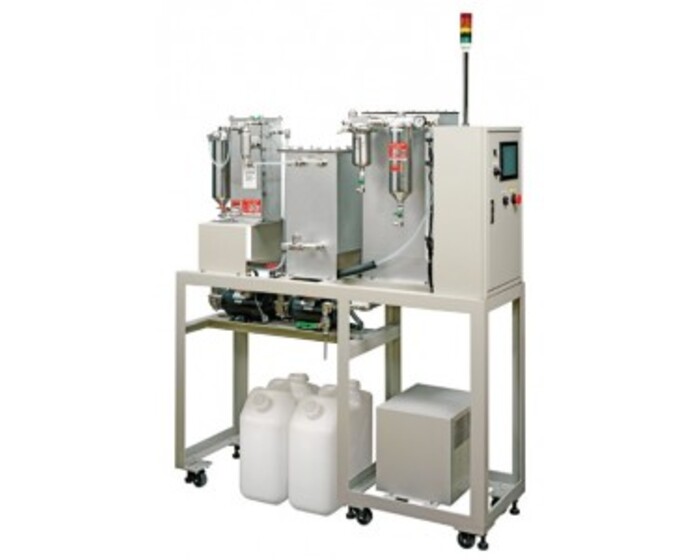
Purification Equipment for REARTH® S Series | Achieve High-Purity Solvent Recovery for Precision Manufacturing
Morikawa’s Purification Equipment enhances the REARTH® S Series by filtering solvents to ultra-high purity—ideal for precision part manufacturing, while reducing waste and solvent procurement costs. ■ What is the Purification Equipment? This specialized unit is designed to work exclusively with the REARTH® S Series to refine recovered solvents even further. Using molecular sieve circulating filtration, it removes microscopic impurities to produce solvents suitable for high-precision industrial applications. ■ Key Features - Advanced Filtration: Circulating system with molecular sieves targets fine residue removal - Enhanced Output Quality: Achieves higher solvent purity than standalone recovery - Precision-Grade Solvents: Suitable for electronics and precision machining industries - Cost Efficiency: Reduces need for virgin solvents by refining recycled materials - Eco-Friendly: Promotes sustainable solvent reuse with consistent quality - Seamless Integration: Designed specifically for REARTH® S Series systems ■ Specifications - Product Name: Purification Equipment - Compatible System: REARTH® S Series - Filtration Method: Molecular sieve-based circulating filtration - Purpose: Enhance solvent purity, remove residual contaminants ■ Why Add Purification to the S Series? Factories aiming for solvent quality close to virgin material—especially in high-spec production—can benefit from this system. It adds minimal operational cost while greatly enhancing solvent usability and lifecycle. 📎 Download detailed product PDF 📞 Contact T.I.T. ELECTRONICS CO., LTD. anytime for support across Thailand #solventpurification #REARTHSseries #molecularfiltration #precisionmanufacturing #solventreuse #Thailandindustry #cleanchemistry #highpuritysolvent #Morikawa #OEM
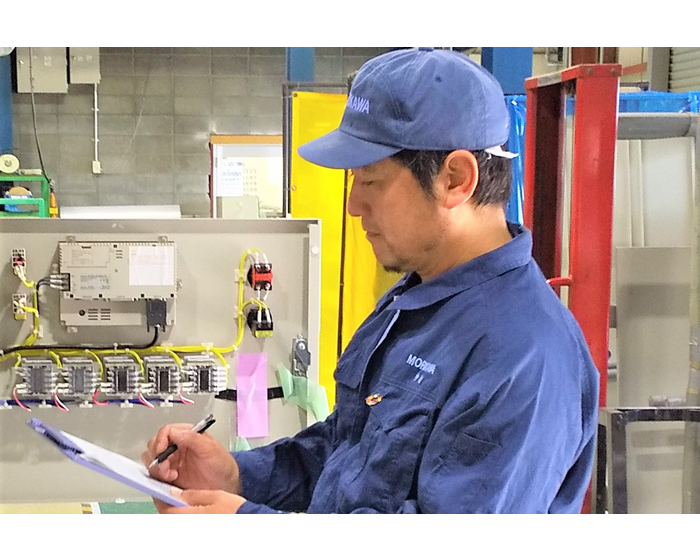
REARTH® SERVICE Organic Solvent Recovery Rental | Start VOC Emission Reduction with Zero Initial Investment
REARTH® SERVICE is a rental-based recovery system for organic solvent gas (VOC) control. It enables factories to reduce solvent costs and meet environmental regulations—without upfront investment. ■ What is REARTH® SERVICE? REARTH® SERVICE offers a high-performance organic solvent gas recovery system under a rental model, making it easy for factories to adopt VOC control without capital expenses. The service includes installation, optimization, and full maintenance to ensure peak system efficiency. ■ Service Highlights - Emission Source Optimization: Includes localized exhaust redesign and jig upgrades to maximize capture efficiency - Professional Installation & Trial Run: Ensures correct setup and calibration - Preventive Maintenance: Tailored maintenance schedules based on usage to maintain performance - No Upfront Cost: Pay monthly and benefit immediately - Backed by R&D: Developed in collaboration with Tokyo Metropolitan Industrial Technology Research Institute ■ Steps to Start REARTH® SERVICE 1. Initial Inspection by Morikawa’s technical team 2. Proposal & Estimate tailored to your factory setup 3. Contract Signing 4. Installation & Commissioning of VOC recovery system 5. Begin Service with full operational and maintenance support ■ Specifications - Service Name: REARTH® SERVICE - Model: Rental with full technical support - Target: VOC-emitting processes (cleaning, coating, printing, etc.) - Benefit: Low-risk, cost-saving VOC recovery ■ Why Choose REARTH® SERVICE? This rental model removes adoption barriers—helping Thai factories comply with regulations, reduce solvent costs, and improve ESG performance without heavy CAPEX. 📎 Download detailed service brochure 📞 Contact T.I.T. ELECTRONICS CO., LTD. anytime for support across Thailand #REARTHSERVICE #VOCreductionrental #solventrecoveryrental #ESGsolutions #Thailandfactory #environmentalcompliance #costsavingservice #Morikawa #OEM #greenmanufacturing
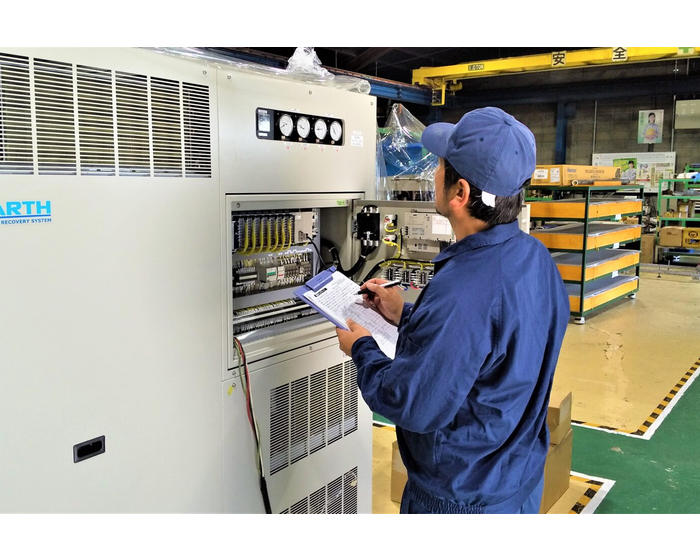
REARTH® SERVICE VOC Recovery Rental | Zero Upfront Cost for Solvent Saving and Emission Compliance
REARTH® SERVICE enables Thai factories to rent advanced solvent gas recovery systems from Morikawa—cutting solvent costs and reducing VOC emissions without initial investment. ■ What is REARTH® SERVICE? REARTH® SERVICE is a rental solution offering high-performance REARTH® series devices for organic solvent vapor recovery. It supports cost-saving operations while helping businesses meet environmental emission standards through a no-CAPEX model. ■ Key Features - Zero Initial Cost: No upfront investment required—ideal for budget-conscious factories - Solvent Reuse: Expensive solvents like IPA and TCE are recovered and reused - Environmental Compliance: VOC emissions are reduced to meet strict Thai and international standards - Pro Maintenance: Regular check-ups by trained technicians ensure stable operation - Cost Transparency: Reports show average solvent savings and emission improvements based on real-world data ■ Specifications - Rental Model: Access to a range of REARTH® series equipment - Support Scope: Includes maintenance, performance monitoring, and recovery system optimization - Target Gases: VOCs from cleaning, coating, printing, or chemical processes - Compliance: Meets industrial and local environmental requirements ■ Why Choose REARTH® SERVICE? - No financial barrier to start - Quick environmental impact reduction - Lower operating cost per ton of recovered solvent - Backed by Morikawa’s expertise and full-service partner in Thailand: T.I.T. ELECTRONICS CO., LTD. 📎 Download detailed service brochure 📞 Contact T.I.T. ELECTRONICS CO., LTD. anytime for support across Thailand #REARTHSERVICE #VOCrental #solventrecoveryservice #nocapexsolution #Thailandfactory #environmentalcompliance #solventreuse #Morikawa #OEM #greenmanufacturing

Morikawa’s VOC Recovery Systems | Award-Winning Technology Trusted in Environmental and Industrial Circles
Morikawa’s VOC gas recovery devices have earned national environmental awards since 1998 for their role in reducing emissions and supporting sustainable manufacturing—trusted across industries like printing, painting, and chemicals. ■ Award-Winning History Morikawa’s commitment to combining environmental conservation with operational efficiency has earned it recognition over decades: - 1998: Tokyo Industrial Technology Award – Contribution to building a circular environmental society - 1999: 26th Outstanding Environmental Device Award, Chairman of The Japan Society of Industrial Machinery Manufacturers - 2008: 11th Ozone Layer Protection and Global Warming Prevention Award, Minister of the Environment - 2013: Resource Recirculation Technology Award, Japan Environmental Management Association for Industry These accolades reflect long-term performance, reliability, and innovation in VOC emission control. ■ Why This Technology is Trusted - Recognized for Eco Contribution: Awarded for environmental impact reduction - Lower Operating Costs: High-efficiency gas recovery reduces raw material loss - Industrial Versatility: Effective in multiple applications: printing, coating, chemical manufacturing - Long Operational Lifespan: Engineered for durable, stable performance - Proven System: Backed by over 25 years of results and trust in Japan and overseas ■ Trusted in Thailand Morikawa’s VOC recovery systems are available locally through T.I.T. ELECTRONICS CO., LTD., offering nationwide installation and service from Bangkok. 📎 Download detailed award & system brochure 📞 Contact T.I.T. ELECTRONICS CO., LTD. anytime for support across Thailand #VOCrecoveryawards #environmentalsolution #Morikawa #solventgascontrol #sustainablefactory #Japanenvironmentaltechnology #OEM #Thailandindustry #airpollutionreduction #greenmanufacturing
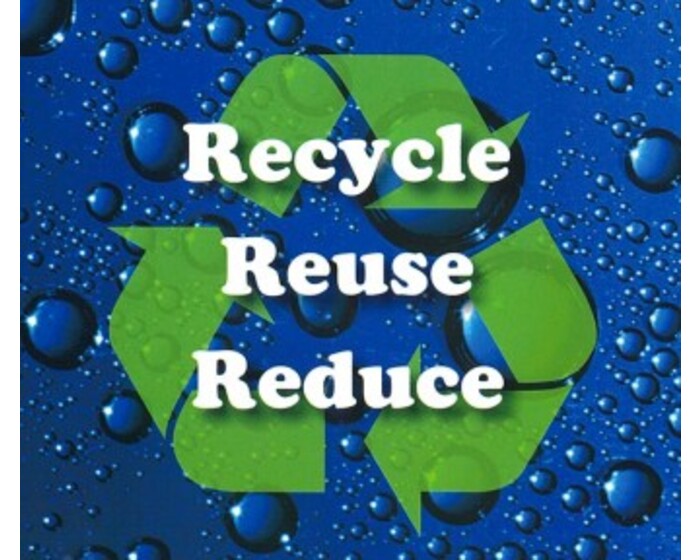
Solvent Recycler | Automatic Distillation System for Cost-Efficient Solvent Recovery
The Solvent Recycler is an automatic regeneration system that distills waste solvents back into high-quality reusable form—cutting disposal costs and reducing environmental impact in chemical, printing, and paint industries. ■ What is the Solvent Recycler? Morikawa’s Solvent Recycler uses distillation-based regeneration to treat waste solvents from factory processes. It efficiently separates solvents from contaminants, allowing the cleaned solvents to be reused in production—supporting both cost savings and environmental compliance. ■ Key Features - Cost Reduction: Recovered solvent quality is comparable to new solvents - Wide Compatibility: Suitable for hydrocarbons, alcohols, ketones, esters, and halogens - Residue Handling: Post-distillation waste is safely collected in special bags - Customizable Operation: Choose between continuous or batch types for different needs ■ Specifications Continuous Type - Normal Pressure: For light sludge applications; 30–250 L/day - Reduced Pressure: For solvents with boiling points ≥150°C Batch Type - Suitable for solidifying sludges; handles 10–150 L/day ■ Application Areas - Chemical Factories: Recovery from cleaning and synthesis lines - Paint & Coating Plants: Reuse of high-boiling-point solvents - Printing Industry: Recovery of ink solvents and wash liquids - Any facility requiring liquid waste treatment under environmental law ■ Why Choose the Solvent Recycler? It offers one of the most flexible and efficient waste liquid solutions on the market—safely reclaiming solvents while minimizing hazardous waste disposal costs. 📎 Download detailed product PDF 📞 Contact T.I.T. ELECTRONICS CO., LTD. anytime for support across Thailand #SolventRecycler #solventrecovery #distillationregeneration #industrialwastetreatment #Thailandfactory #Morikawa #liquidwastereduction #OEM #solventreuse #environmentalcompliance
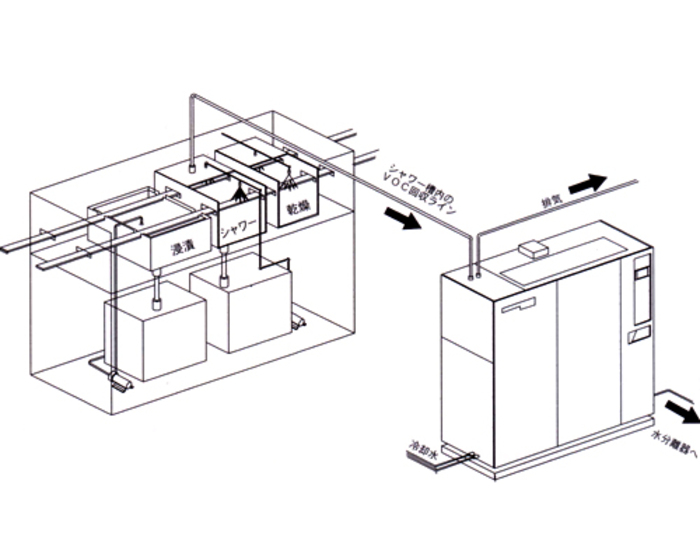
Case Study: REARTH® S Series Reduces Solvent Cost by 66% in Connector Cleaning for Electronic Parts
Company B, a manufacturer of electrical connectors, reduced solvent purchase costs by ¥1.47 million/month by recovering 1-bromopropane (nPB) using the REARTH® S Series—cutting both VOC emissions and operating expenses. ■ Background - Company: B (Electronic Parts Manufacturing) - Process: Connector terminal cleaning in hoop-type sealing treatment - Solvent Used: 1-bromopropane (nPB) - Emission Source: Local exhaust in drying tank - Challenge: High solvent loss (1.5t/month) and high cost (¥2.24 million/month) ■ Solution: REARTH® S Series Implementation Morikawa’s S Series organic solvent gas recovery system was installed to capture and recycle vaporized nPB. ■ Results - Before: 1.6 tons/month used, ¥2,240,000/month solvent cost - After: 0.55 tons/month used, ¥770,000/month solvent cost - Cost Reduction: 66% saved—¥1,470,000 per month ■ Benefits for Company B - Solvent Efficiency: Reduced waste and improved resource use - Cost Savings: Substantial reduction in monthly solvent spending - Environmental Impact: Lower VOC emissions into the air ■ Specifications - Solvent Target: 1-bromopropane (nPB) - Application: Cleaning of connector terminals in electronic component manufacturing - Model Used: REARTH® S Series ■ Why It Matters This case confirms that REARTH® S Series enables economic production and VOC control—making it an ideal solution for electronics manufacturers and other high-precision industries. 📎 Download detailed product PDF 📞 Contact T.I.T. ELECTRONICS CO., LTD. anytime for support across Thailand #REARTHSseries #nPBrecovery #VOCreduction #electronicsmanufacturing #solventcostsaving #Thailandfactory #connectorcleaning #Morikawa #OEM #solventreuse

Morikawa Solvent Recycler | Regenerates Hydrocarbon to Ester Solvents for Cost and Waste Reduction
Morikawa’s Solvent Recycler is a powerful regeneration system for various used solvents—helping factories cut costs and reduce waste across hydrocarbon, alcohol, ketone, and ester applications. ■ What is the Solvent Recycler? The Solvent Recycler restores waste solvents into high-purity reusable form. Using an advanced distillation process, it minimizes waste disposal costs and reduces reliance on new solvent purchases—contributing to more sustainable and profitable factory operations. ■ Solvent Types That Can Be Recycled This system supports a wide range of industrial solvents: - Hydrocarbons: Toluene, Xylene, Solvent naphtha, Hexane, Isohexane - Alcohols: Methanol, Ethanol, Butanol, IPA - Ketones: Acetone, MEK, MIBK - Esters: Ethyl acetate, Butyl acetate, Methoxybutyl acetate, Propyl acetate - Others: Halogen-based, fluorinated, and chlorinated solvents > For solvents not listed, please contact Morikawa’s Environmental Business Division for compatibility. ■ Why It Matters for Thai Industry - Cost Reduction: Reduces solvent procurement frequency - Waste Minimization: Lowers hazardous solvent disposal volume - High Recovery Purity: Enables repeated reuse in precision processes - Environmental Compliance: Aligns with Thai and global standards - Versatile Applications: Suitable for chemical, printing, coating, and electronics factories ■ Why Choose Morikawa? Morikawa’s system is trusted across Asia for its reliability, solvent compatibility, and ease of operation. It helps factories meet their ESG goals while boosting operational savings. 📎 Download detailed product PDF 📞 Contact T.I.T. ELECTRONICS CO., LTD. anytime for support across Thailand #SolventRecycler #solventregeneration #hydrocarbonrecovery #esterrecycling #industrialcleaning #Thailandfactory #Morikawa #wastereduction #OEM #environmentalcompliance
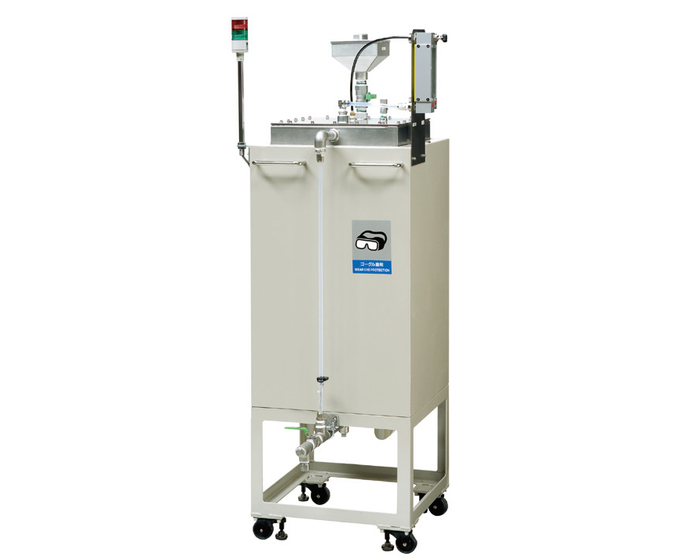
Simple Recycler Unit for REARTH® S Series | Recover Vaporized Solvent from Waste Liquid with Low-Temperature Bubbling
The Simple Recycler Unit is an accessory for the REARTH® S Series, designed to extract and recycle vaporized solvents from waste liquid—reducing solvent usage, waste, and operating costs. ■ What is the Simple Recycler Unit? This unit works alongside the REARTH® S Series to recover solvent vapors from waste liquids generated in cleaning and coating processes. Using low-temperature indirect heating and bubbling, it separates vapor from liquid, then liquefies the recovered gas for reuse—supporting cleaner, more cost-effective operations. ■ Key Features - S Series Integration: Purpose-built to connect seamlessly with REARTH® S Series - Efficient Gas Recovery: Extracts vapor via bubbling at low temperatures - Liquid Solvent Regeneration: Condensed vapor is reused in production - Reduces Solvent Waste: Optimizes solvent lifecycle and cuts disposal volume - Energy-Efficient: Low heat method reduces power consumption ■ Specifications - Product Name: Simple Regeneration Device - Compatibility: REARTH® S Series - Heating Method: Low-temperature indirect heating - Function: Extract and liquefy solvent vapor from liquid waste ■ Why Choose the Simple Recycler Unit? It’s a smart upgrade for facilities already using the REARTH® S Series—adding another layer of solvent recovery and cost efficiency while reinforcing sustainable production goals. 📎 Download detailed product PDF 📞 Contact T.I.T. ELECTRONICS CO., LTD. anytime for support across Thailand #Simplerecycler #REARTHaccessory #solventrecoverysystem #lowtemperaturebubbling #cleaningprocess #Thailandfactory #wastereduction #Morikawa #OEM #solventreuse
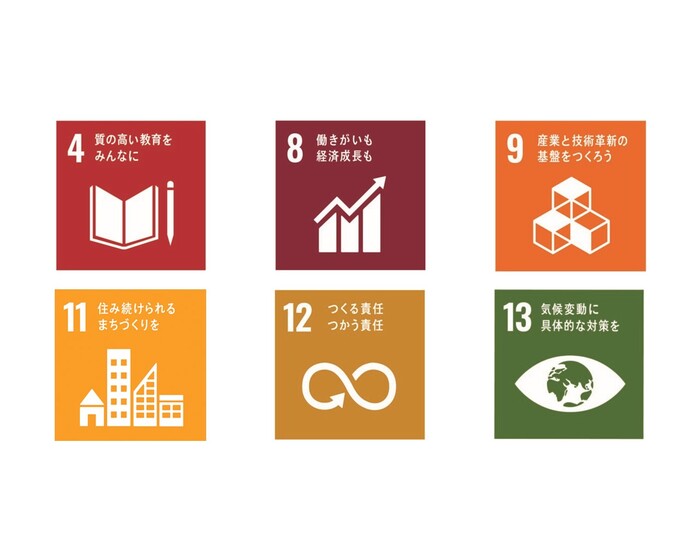
Morikawa's Solvent Regeneration Equipment | Supporting SDGs Through Sustainable Technology and Social Action
Morikawa’s automatic solvent regeneration systems align with the United Nations SDGs by promoting sustainable industry, responsible production, and climate action—while also contributing to community education and ethical employment. ■ SDG Goals Supported by Morikawa ★ Goal 4: Quality Education - Offers web-based employee training to promote skill development (4.4) - Supports local schools and NPOs in Nagano to encourage inclusive education (4.1, 4.5) - Engages employees in community education projects for children ★ Goal 8: Decent Work and Economic Growth - Creates new jobs via expansion of environmental business and rental services (8.5) - Promotes equal pay for equal work policies within the company ★ Goal 9: Industry, Innovation, and Infrastructure - Expands its environmental technology, including solvent recovery systems, to global markets (9.4) ★ Goal 11: Sustainable Cities and Communities - Maintains disaster response partnerships with Chikuma City in Nagano (11.5) - Sponsors local sustainability guides and education (11.3) ★ Goal 12: Responsible Consumption and Production - Enhances solvent regeneration and valve systems to reduce industrial waste (12.4) - Promotes solvent reuse technologies that help manufacturers reduce raw material consumption ★ Goal 13: Climate Action - Implements systems that reduce VOC and carbon emissions - Supports disaster readiness while expanding green business offerings (13.1, 13.3) ■ Why It Matters for Thai Factories By choosing Morikawa’s solvent recycling solutions, Thai factories can not only cut costs and improve operational efficiency—but also align with global ESG goals and SDG principles. 📎 Download detailed sustainability report 📞 Contact T.I.T. ELECTRONICS CO., LTD. anytime for support across Thailand #SDGsindustry #sustainablesolutions #Morikawa #VOCreduction #greenmanufacturing #Thailandfactory #solventrecycling #ESGcompliance #OEM #climateaction
CONTACT
Inquiry